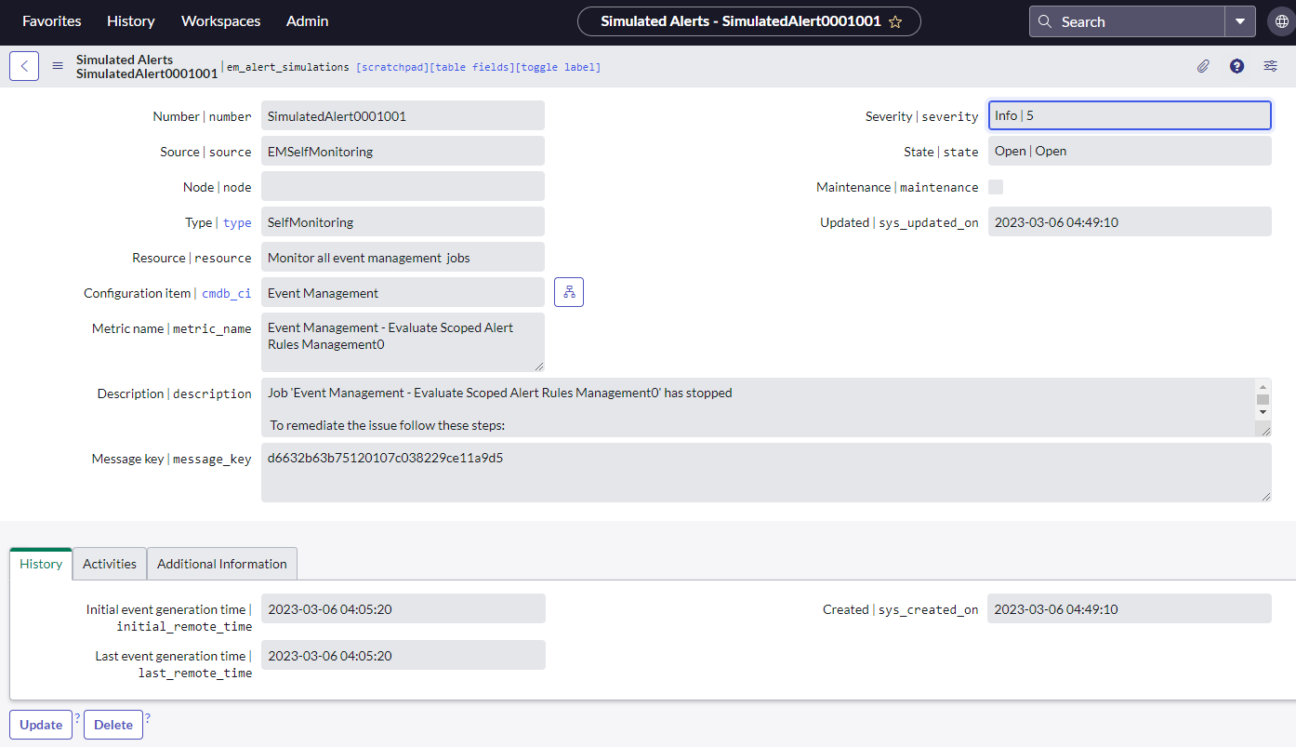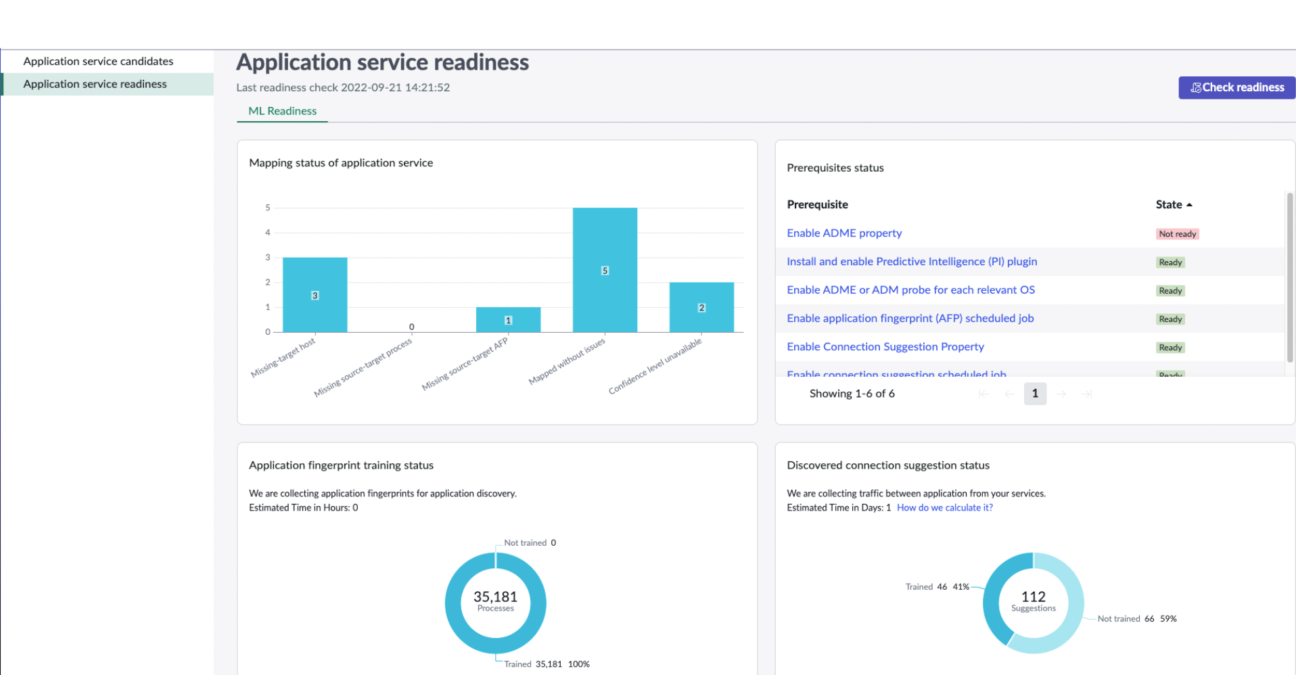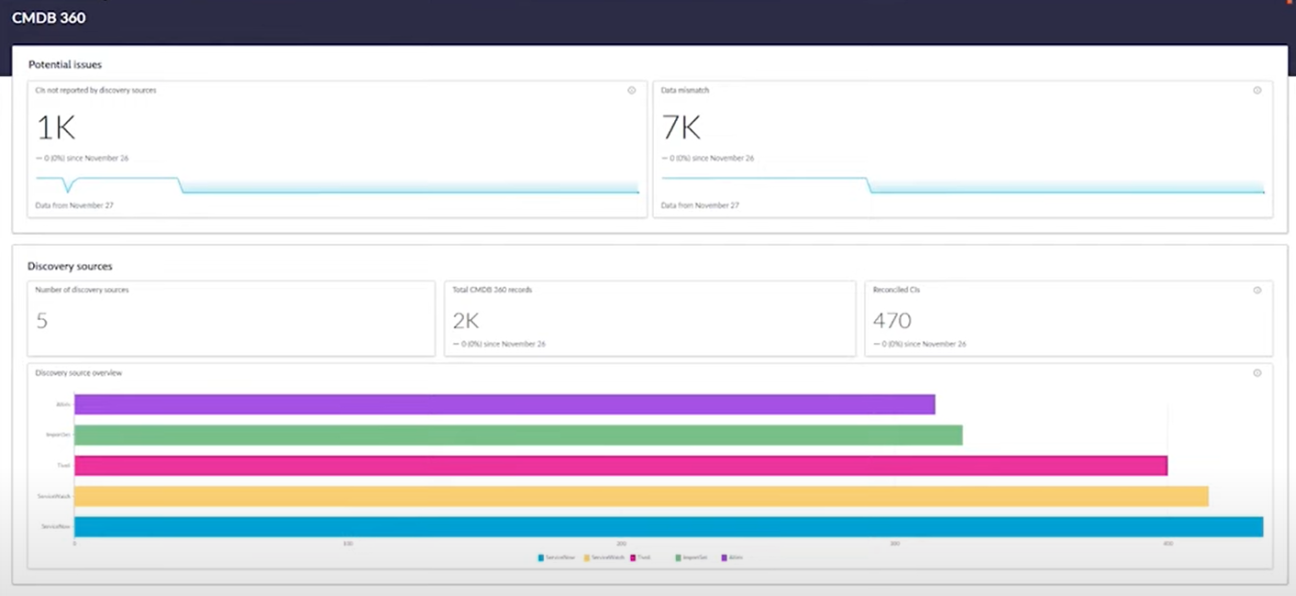Are you curious about what’s new in the ServiceNow Utah release for ITOM Health, Governance, Visibility, Optimisation, and Event Management?
Let’s take a deep dive into the most important highlights of the release and see upcoming changes to ServiceNow’s Service Mapping Plus, Containerised MID Server Autoscaling, ServiceNow Vault, and CMDB 360/Multisource CMDB products.
ITOM Health
Most of you probably already know about ITOM Health but for those who do not – it is a product designed to help organisations track and maintain the health of their services through applications such as Event Management, Agent Client Collector, and Health Log Analytics. Thanks to the latest Utah release, ITOM Health has been improved in terms of:
- alert performance,
- guided setup for Agent Client Collector Log Analytics,
- the ability to simulate and plan data input mapping in Test mode for Health Log Analytics.
When it comes to Event Management, it has been enhanced with the ability to enrich and normalise alerts using alert tags. This feature allows you to better organise and manage alerts, making it easier to pinpoint issues and take action. Additionally, event rules and event field mapping definitions can now be used to automatically create clustering tag definitions, simplifying the process of creating application clusters in application services.
These updates and enhancements help organisations to:
- better track and maintain the health of their services,
- reduce alert noise,
- streamline their operations.
To help users better understand event processing, ServiceNow has added an alert simulation. This feature simulates how rules are executed on a given event and how the event fields change after each rule is executed. It does sound good, doesn’t it?

The Utah release has introduced several new connectors, including:
- Honeycomb
- Kafka
- OP5
- OpsView
- SCOM
- ScoutAPM
- VMware vRealize Operations
- Zabbix 6
Thanks to those connectors, you can now easily integrate other tools and platforms with ServiceNow’s event management system.
In conclusion, new updates to Event Management provide more flexibility, control, and insights to users, allowing them to better manage their IT operations and respond quickly to critical events.
While speaking about the Utah release and ITOM Health we definitely need to mention the updates for the Agent Client Collector. The new, improved alert performance with Metric Intelligence resulted in a 39% reduction in alert noise. Moreover, ServiceNow introduced a guided setup for configuring Agent Client Collector Log Analytics, making it easier to set up and troubleshoot problematic Linux and Windows server resources using the Monitoring Technology Dashboard.
The main value for organisations is that it allows them to better manage their IT infrastructure by providing more accurate and relevant alerts. With the guided setup for configuring Agent Client Collector Log Analytics and the Monitoring Technology Dashboard, troubleshooting problematic server resources becomes simpler, reducing downtime and increasing efficiency. Ultimately, the improved performance and easier usage of the Agent Client Collector can help companies save costs.
Various improvements were also made to the Health Log Analytics application. These include the ability to:
- migrate data input and source type configuration to a different instance
- test connectivity before publishing a data input configuration
- simulate and plan data input mapping in Test mode
All of these features provide more flexibility and easier management of the log data across multiple instances. They ensure that data inputs are correctly configured before going live, and allow testing and refining of mapping configurations before they are put into production.
Last but not least, the predefined dashboard introduced in Health Log Analytics gives you a better visualisation of the log data for business operations, and the Linux content pack streamlines onboarding time for Linux log data. The UDP data input and Google Cloud Pub/Sub data input provide more options for sending and receiving log messages.
Highlights of ITOM Health:
- Improvements to alert performance in the Agent Client Collector application, resulting in a 39% reduction in alert noise.
- Guided setup for configuring Agent Client Collector Log Analytics.
- The ability to simulate and plan data input mapping in Test mode for Health Log Analytics.
- The ability to migrate data input and source type configuration to a different instance in Health Log Analytics.
- Visualise log data for business operations using a predefined dashboard in Health Log Analytics.
The updates that came with the Utah release will definitely have a huge impact on the user experience, making it easier to work with and manage the data input.
ITOM Governance
There are a lot of new features and enhancements within ITOM Governance. These include:
- CI finder mapping
- AWS assume role support
- bulk remediation
- custom remediation catalogue item
- and the ServiceNow CCG Content Pack
They all aim to improve the functionality of the Cloud Configuration Governance, enabling users to link resources with appropriate CIs, scan multiple AWS organisations, and fix multiple violations at once.
Additionally, the bulk remediation feature and custom remediation catalogue item improve the overall governance of the organisation’s cloud environment by streamlining the remediation process and providing greater flexibility in addressing specific configuration violations. The CCG Content Pack store app simplifies the process of accessing and managing base system contents such as policies and remediation actions. The introduction of these features will help organisations to better manage and govern their cloud environments, increasing overall productivity and efficiency.
ITOM Visibility
ITOM Visibility has introduced several new features and changes in the Utah release:
- automated mapping of application services
- custom support for ITOM SU Licensing install_status
- new discovery patterns for industry-standard devices and applications
- quick start tests for Service Mapping
- improved Agent Client Collector for Visibility use cases
The automated mapping of application services using predictive intelligence can help you accelerate the mapping of application services based on automatically generated suggestions.
ITOM SU Licensing now supports custom values for the Status (install_status) CI attribute, allowing organisations to exclude resources that have been de-provisioned and prevent overcounting or undercounting of resources.
New discovery patterns for industry-standard devices and applications, such as Amazon OpenSearch, AWS MemoryDB for Redis, and AWS DB cluster, are now available in the platform.
Quick start tests for Service Mapping can be used to verify if Service Mapping works as expected, especially after upgrades or new deployments, and the Agent Client Collector for Visibility now includes support of additional data points to the configuration items (CIs) that are discovered.
Moreover, ServiceNow also made some changes in Certificate Inventory and Management:
- now it supports the automation of fulfilment flows for Microsoft Active Directory Certificate Services (ADCS)
- allows access to catalogue forms from the Employee Center Privacy and Security section
- gives visibility to the entire certificate chain, and containerised MID Server and Agent Client Collector to discover Kubernetes infrastructure and topology without credentials
- enhanced discovery patterns are available to ensure the latest versions of devices and applications are discovered while using Discovery properties to avoid software data discrepancy between Discovery and SCCM
Is it worth it? With the automated mapping of application services and custom support for ITOM SU Licensing install_status, organisations can more efficiently manage and track their resources. The addition of new discovery patterns and quick start tests for Service Mapping also ensure that the latest industry-standard devices and applications are discovered and Service Mapping is working as expected after upgrades or new deployments. The improvements made to the Agent Client Collector for Visibility and Certificate Inventory and Management further enhance the management and visibility of IT resources.
Shortly, these updates will definitely help you optimise your organisation’s IT operations and improve efficiency.
Next features and products changes
Service Mapping Plus
ServiceNow has released a new version of Service Mapping Plus that offers extended features for Service Mapping functionality. The latest release, version 1.6.0, introduces the Automated Service Suggestions feature. It allows users to create application services based on potential service suggestions generated using Machine Learning (ML). The ML-powered framework calculates entry points automatically, making the mapping faster and more efficient.

The Service Mapping Plus application is designed to provide Service-aware and Application Service context-aware data on the ServiceNow platform, which is essential for AI-powered Service Operations. The top-down mapping feature allows users to identify applications with URL entry points, while tag-based mapping simplifies the mapping journey for cloud and container environments.
With just a few clicks, users can create application services based on potential service suggestions generated using Machine Learning. Additionally, the application service readiness dashboard enables users to perform a health check and validate all prerequisites needed for ML-powered Service Mapping.
In conclusion, the Service Mapping Plus application provides an efficient and reliable way to map application services and improve Service Operations. The addition of Automated Service Suggestions powered by Machine Learning makes it easier than ever to create application services, providing a faster and more accurate mapping journey.
Containerised MID Server Autoscaling
Containerised MID Server Autoscaling allows for the automatic scaling of MID Server replicas to match demand using Kubernetes Horizontal Pod Autoscaler (HPA). The StatefulSet ensures that the same persistent volume is attached to the new pod during workload fluctuations, allowing the MID Server to resume its state. The Persistent Volume Claim (PVC) declares the desired persistent volume where the MID Server stores config.xml, metadata files, and sub-folders. Deployment requests exported as YAML files can be used to create a StatefulSet workload and new MID Server pods in the Kubernetes cluster. However, HPA only supports CPU and memory metrics and should not be used for automatic flow via a dedicated deployment MID Server.
ServiceNow Vault
In today’s digital age, securing sensitive data has become a top priority for organisations worldwide. Data breaches can result in a loss of reputation, financial damages, and legal consequences. ServiceNow, a leading cloud-based platform, offers a solution to this problem with its ServiceNow Vault product set.
ServiceNow Vault is a set of data security tools that offer encryption, secrets management, and data privacy protections. It includes Encryption and Key Management, Secrets Management, Code Signing, and Data Privacy components. These tools provide highly configurable security modules to replace hard-coded secrets and validate application configuration data before it’s used. Data Privacy also removes personally identifiable information from user data, ensuring regulatory compliance. Having ServiceNow Vault helps ensure the protection of sensitive information, keeping it safe from unauthorised access and use. It is also good to mention that it is a paid plugin.
CMDB 360 and Multisource CMDB
The Utah release of the Configuration Management Database (CMDB) introduces new features and changes to the Multisource CMDB and CMDB 360 capabilities. CMDB 360 now provides a complete history of all discovery sources and proposed values for Configuration Item (CI) attribute updates. This feature allows users to track the population of the CMDB by various discovery sources at the CI attribute level and revert CI updates from a specific discovery source.

Furthermore, the Multisource CMDB feature is now part of the CMDB 360 feature, providing all the functionality and processes of Multisource CMDB along with additional capabilities such as an analytics dashboard and new query functionality. Users can access all of the CMDB 360 capabilities in the CMDB 360 view in CMDB Workspace.
In terms of changes, the Utah release allows users to configure the Identification and Reconciliation Engine (IRE) to apply filter conditions before or after attribute values change by setting the glide.identification_engine.enable_reconciliation_filter_before_update system property. Additionally, the Multisource CMDB feature that tracks the activities and history of data sources as they insert and update CI attributes is now included in the CMDB 360 feature.
The Utah release of CMDB 360 introduces new features and changes that provide users with a more powerful tool for managing CI data in the CMDB. By retaining complete history and providing additional capabilities, users can improve their CI management, make informed decisions, and troubleshoot issues more effectively.
